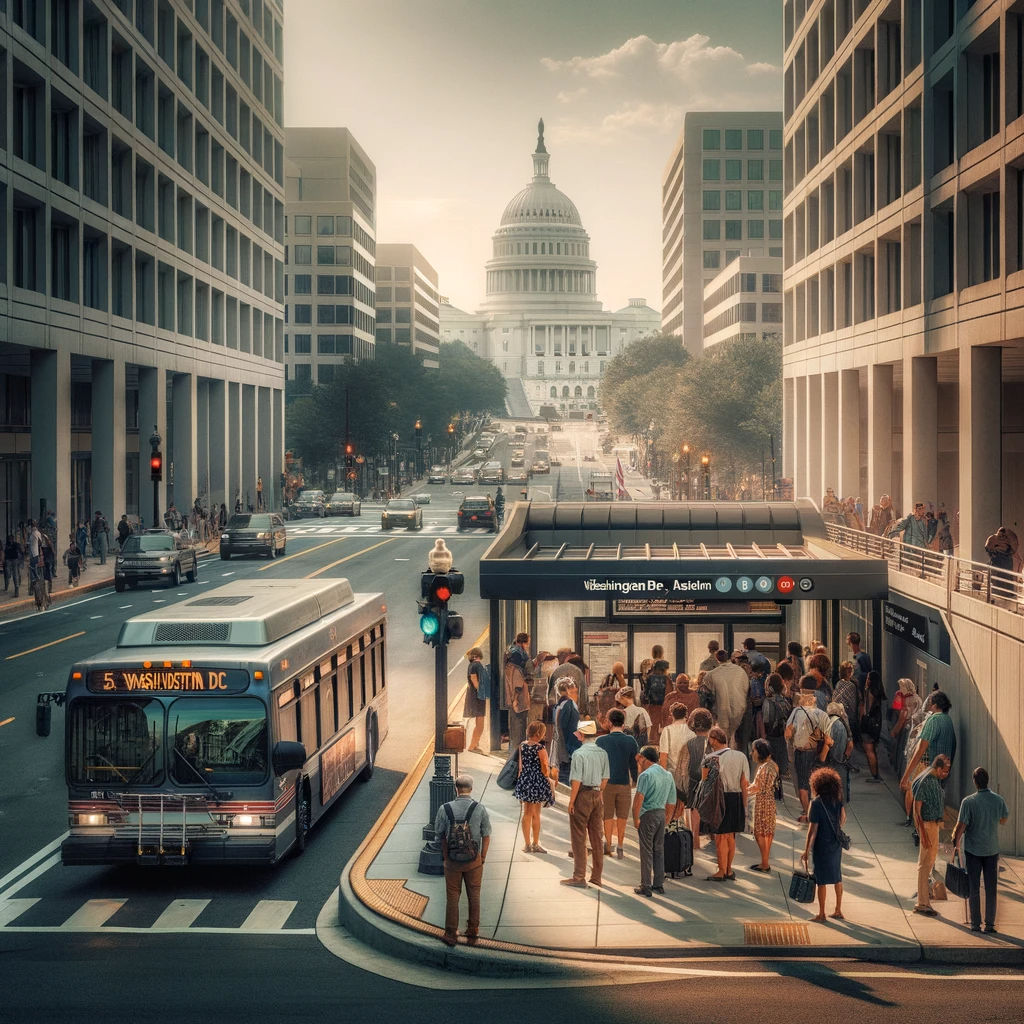The main transit agency in the Washington, DC, area, WMATA, is facing a major budget shortfall as the three regional governments of DC, Maryland, and Virginia have not provided sufficient funding. WMATA runs the area’s Metrorail service, as well as an extensive bus network. Public transit provided by WMATA plays an essential role in how people travel in the region. WMATA recorded over 150 million passenger trips in 2022, the seventh most of any transit agency in the country. That’s over 400,000 trips per day, and the numbers have increased in 2023 as more people return to working from offices regularly.
However, because of the impending budget shortfall, the agency has proposed massive cuts to service. The agency suggests that, without additional funding, it would have to close 10 Metrorail stations, significantly increase wait times for Metrorail services, and eliminate nearly half of the existing bus lines.
Although people from all walks of life in the DC area use public transit, these proposed cuts would hit low-income residents of the DC area much harder than wealthier residents. I analyzed commuting data from the 2022 American Community Survey for the District of Columbia and the adjacent counties to understand who relies on public transport to get to work, and thus who would be most affected by service cuts. Note that this data does not include people who use public transit for travel other than commuting, so it will understate the total number of people who rely on public transit.
Low-income workers are much more likely to use public transportation to get to work. Over 20 percent of workers in families below the poverty line took public transit to work, a rate roughly twice that of high-income workers.
The difference in public transit use by income is even more dramatic when looking specifically at buses, where WMATA has proposed to cut nearly half the lines and reduce service on additional lines. About 11 percent of workers in poverty and 10 percent of workers near poverty commuted via bus, compared with only 3 percent of the highest income workers.
Inevitably, if WMATA is forced to make these service cuts, more people will be forced to commute to work by other means. For people with higher incomes, this may mean simply driving instead of taking public transport. However, this is not always an option for many—over one quarter of workers in poverty live in households that have zero cars, and car ownership is very expensive, with average annual costs of over $12,000.
Those who are unable to purchase a car and must continue to use public transit can expect their commute times to increase, with longer waits for trains or longer walks to different bus stops.
Furthermore, increasing the number of cars on the road will cause more crashes and more deaths, something that has already reached crisis levels in the Washington, DC area. In 2023 in the District alone, 52 people died in traffic crashes, the highest yearly total since 2007. Fatal crashes are more likely to occur in low-income areas, meaning that not only will low-income people find it harder to get to their jobs, friends, and family, but they will also be more likely to be killed while doing so.
Living in the Washington, DC area is already extremely expensive, with DC itself ranked as the 7th most expensive urban area to live, and two surrounding areas also in the top 15. Low-income residents are being forced out of the area due to the high cost of living. If the District, Maryland, and Virginia do not step up and provide the funding that WMATA needs to maintain its services, this trend will only worsen.

